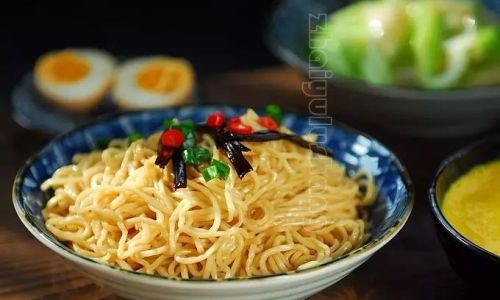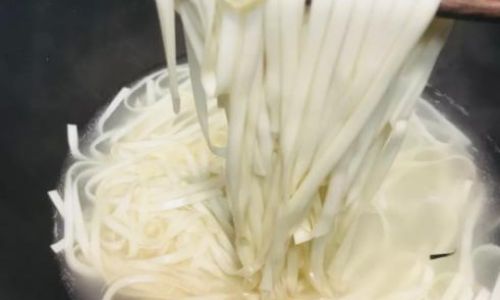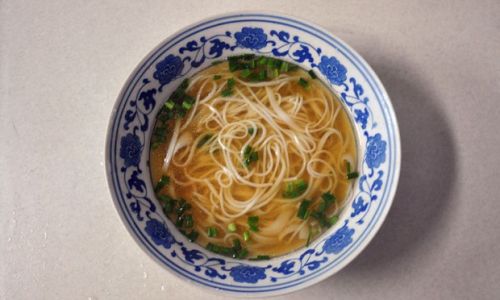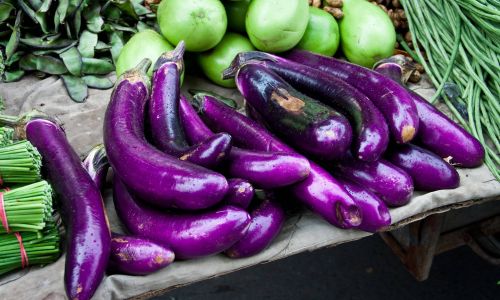Table of content
Scallion oil noodles, known as Cong You Ban Mian in Chinese, are a beloved staple in Chinese cuisine, celebrated for their simplicity, aromatic richness, and ability to satisfy even the most discerning palate. This dish, which originated in the heart of Shanghai but has since become a pan-Asian favorite, embodies the philosophy that culinary excellence need not rely on complexity. At its core, scallion oil noodles are a harmonious blend of toasted scallions, fragrant oil, and perfectly cooked noodles, dressed with a savory-sweet sauce. Yet, beneath this unassuming exterior lies a dish steeped in history, culture, and culinary craftsmanship.
A Brief History and Cultural Significance
The origins of scallion oil noodles can be traced back to the bustling streets of Shanghai during the early 20th century. As a melting pot of cultures and flavors, Shanghai’s cuisine has long been characterized by its ability to elevate humble ingredients into dishes of refined elegance. Scallion oil noodles emerged as a testament to this ethos, offering a filling, affordable meal for laborers, students, and families alike.
Traditionally, the dish was prepared in small street stalls, where vendors would fry scallions in oil until crispy and golden, releasing their natural sweetness and aromatic oils. The infused oil, known as cong you (scallion oil), became the soul of the dish, imparting a depth of flavor that transformed plain noodles into a gastronomic delight. Over time, the recipe evolved, with cooks experimenting with soy sauce, sugar, and even a splash of vinegar to balance the richness of the oil.

Today, scallion oil noodles are not merely a meal but a cultural icon. They represent the essence of Chinese home cooking—nourishing, unpretentious, and rooted in tradition. Whether enjoyed as a quick breakfast, a late-night snack, or a comforting dinner, the dish bridges generations, with grandparents and grandchildren alike savoring its familiar warmth.
The Anatomy of Scallion Oil Noodles: Ingredients and Technique
At first glance, the ingredients list for scallion oil noodles seems deceptively simple: noodles, scallions, oil, soy sauce, sugar, and perhaps a pinch of salt. Yet, as any seasoned cook will attest, the magic lies in the technique. Each component plays a critical role, and mastery requires attention to detail.
The Noodles
The foundation of any great scallion oil noodle dish is the noodle itself. Traditionally, fresh alkaline noodles, known as jian mian, are used. These noodles, made from wheat flour, water, and kansui (alkaline water), have a springy texture and a subtle yellow hue. The alkaline water gives the noodles their characteristic chewiness and helps them absorb the scallion oil without becoming soggy.
In regions where fresh alkaline noodles are unavailable, dried wheat noodles or even spaghetti can serve as a substitute, though the texture may vary. The key is to cook the noodles al dente—firm to the bite—to ensure they hold up when tossed with the fragrant oil and sauce.
The Scallions
Scallions, or green onions, are the star of the show. Both the white and green parts are used, but they are treated differently to maximize flavor. The white portions, with their mild oniony sweetness, are sliced into thin rings and sautéed in oil until golden and crispy. The green parts, sliced into long shreds, are added later to retain their vibrant color and fresh grassy aroma.
The choice of scallions matters. Look for firm, bright green stalks with crisp white bases. Avoid wilted or yellowing scallions, as they will impart a bitter note to the dish.
The Scallion Oil
The process of infusing oil with scallions is a delicate dance. Heat is applied gradually to coax out the scallions’ natural sugars without burning them. The oil—typically a neutral variety like vegetable or canola—is heated over low to medium heat, and the scallions are added once the oil begins to shimmer.
As the scallions sizzle, they release their moisture, causing the oil to bubble gently. This slow cooking process, which can take up to 10 minutes, ensures the scallions caramelize evenly, turning a deep golden brown. The result is an oil infused with layers of flavor: sweet, savory, and subtly nutty.
The Sauce
The sauce is a balance of umami, sweetness, and salt. Light soy sauce provides the base, while a touch of dark soy sauce adds depth and color. A sprinkle of sugar rounds out the flavors, tempering the soy sauce’s saltiness. Some recipes call for a splash of black vinegar or oyster sauce for complexity, though purists argue that simplicity is key.
The sauce is mixed separately before being combined with the noodles and scallion oil. This allows the cook to adjust the seasoning to taste, ensuring the dish is neither too salty nor too bland.
The Cooking Process: Step-by-Step
Creating the perfect bowl of scallion oil noodles is a ritual that rewards patience and precision. Here’s a breakdown of the process:

-
Prepare the Scallions: Rinse the scallions thoroughly and pat them dry. Slice the white and light green parts into thin rings, reserving the dark green tops for garnish.
-
Infuse the Oil: Heat a neutral oil in a wok or pan over low heat. Add the sliced white scallions and cook slowly, stirring occasionally, until golden and crispy. This should take 8–10 minutes. Remove the fried scallions with a slotted spoon and set aside, leaving the infused oil in the pan.
-
Cook the Noodles: Bring a large pot of salted water to a rolling boil. Add the noodles and cook according to the package instructions, or until al dente. Drain the noodles and rinse them under cold water to stop the cooking process. Drain thoroughly.
-
Assemble the Sauce: In a small bowl, combine light soy sauce, dark soy sauce (if using), sugar, and a pinch of white pepper. Stir until the sugar dissolves.
-
Toss the Noodles: Return the cooked noodles to the pot. Pour the scallion oil and sauce over them, tossing gently to coat evenly. The noodles should glisten but not be greasy.
-
Garnish and Serve: Transfer the noodles to serving bowls. Top with the crispy fried scallions, fresh scallion shreds, and a sprinkle of toasted sesame seeds. Serve immediately, while the noodles are still warm.
Variations and Regional Twists
While the classic recipe is revered, scallion oil noodles have inspired countless regional variations, each reflecting local tastes and ingredients.
-
Sichuan-Style: In Sichuan province, the dish is often spiked with chili oil, Sichuan peppercorns, and a dash of black vinegar, adding a fiery kick to the traditional recipe.
-
Taiwanese Adaptation: Taiwanese cooks sometimes add minced pork or dried shrimp to the scallion oil, creating a heartier version known as You Zha Mian.
-
Vegetarian and Vegan Options: For plant-based diets, the dish can be made with mushroom-based soy sauce and toasted sesame oil, which mimics the richness of traditional scallion oil.
-
Modern Interpretations: Contemporary chefs have experimented with adding ingredients like pickled vegetables, soft-boiled eggs, or even truffle oil to elevate the dish’s profile.

The Science Behind the Flavor
The allure of scallion oil noodles lies in their mastery of flavor chemistry. When scallions are fried in oil, their natural sugars undergo caramelization, creating Maillard reaction compounds that impart a complex, savory-sweet taste. The oil itself acts as a solvent, extracting the scallions’ volatile aromatic compounds, which are then evenly distributed throughout the noodles.
The addition of soy sauce introduces umami, a fifth taste sensation that enhances the dish’s savory depth. Sugar, in small amounts, amplifies the umami while balancing the soy sauce’s saltiness. Together, these elements create a dish that is greater than the sum of its parts.
Health Considerations and Nutritional Benefits
While scallion oil noodles are undeniably delicious, they are not without caloric considerations. The dish’s richness comes from the oil, which, while providing healthy fats, should be consumed in moderation. However, scallions themselves are a nutritional powerhouse, offering vitamins A and C, iron, and dietary fiber.
To make the dish healthier, consider:
- Using less oil or substituting part of it with chicken or vegetable broth.
- Adding steamed vegetables like bok choy or spinach for fiber and nutrients.
- Opting for whole-grain noodles to increase fiber content.
Scallion Oil Noodles in Popular Culture
Scallion oil noodles have transcended their humble origins to become a global sensation. In recent years, the dish has been featured in international cooking shows, food blogs, and even high-end restaurants. Social media platforms like Instagram and TikTok have further propelled its popularity, with home cooks sharing their unique twists on the classic recipe.
In 2020, the dish gained viral fame after a Shanghai street vendor’s scallion oil noodle recipe went viral, inspiring millions to recreate it at home. Celebrities and food critics alike have praised its simplicity, with one renowned chef describing it as “the ultimate expression of Chinese home cooking.”
The Emotional Resonance of Scallion Oil Noodles
Beyond its culinary merits, scallion oil noodles hold a special place in the hearts of many. For immigrants, the dish evokes memories of childhood—of grandmothers stirring vats of scallion oil in cramped kitchens, or of late-night study sessions fueled by steaming bowls of noodles.
In China, the dish is often associated with wei jing, or “the taste of home.” It is a comfort food that transcends language and geography, reminding diners of the simple joys of sharing a meal with loved ones.
Conclusion: The Enduring Legacy of Scallion Oil Noodles
Scallion oil noodles are more than just a meal—they are a testament to the power of simplicity. In a world of ever-evolving culinary trends, this dish remains a constant, cherished for its ability to deliver comfort, flavor, and nostalgia in every bite. Whether enjoyed in a bustling Shanghai night market or a cozy kitchen halfway around the globe, scallion oil noodles continue to bridge cultures, generations, and appetites, proving that sometimes, the most profound pleasures are also the simplest.
As you savor your next bowl, take a moment to appreciate the centuries of tradition, the meticulous craftsmanship, and the humble scallion that makes it all possible. After all, in the world of scallion oil noodles, less truly is more.






0 comments